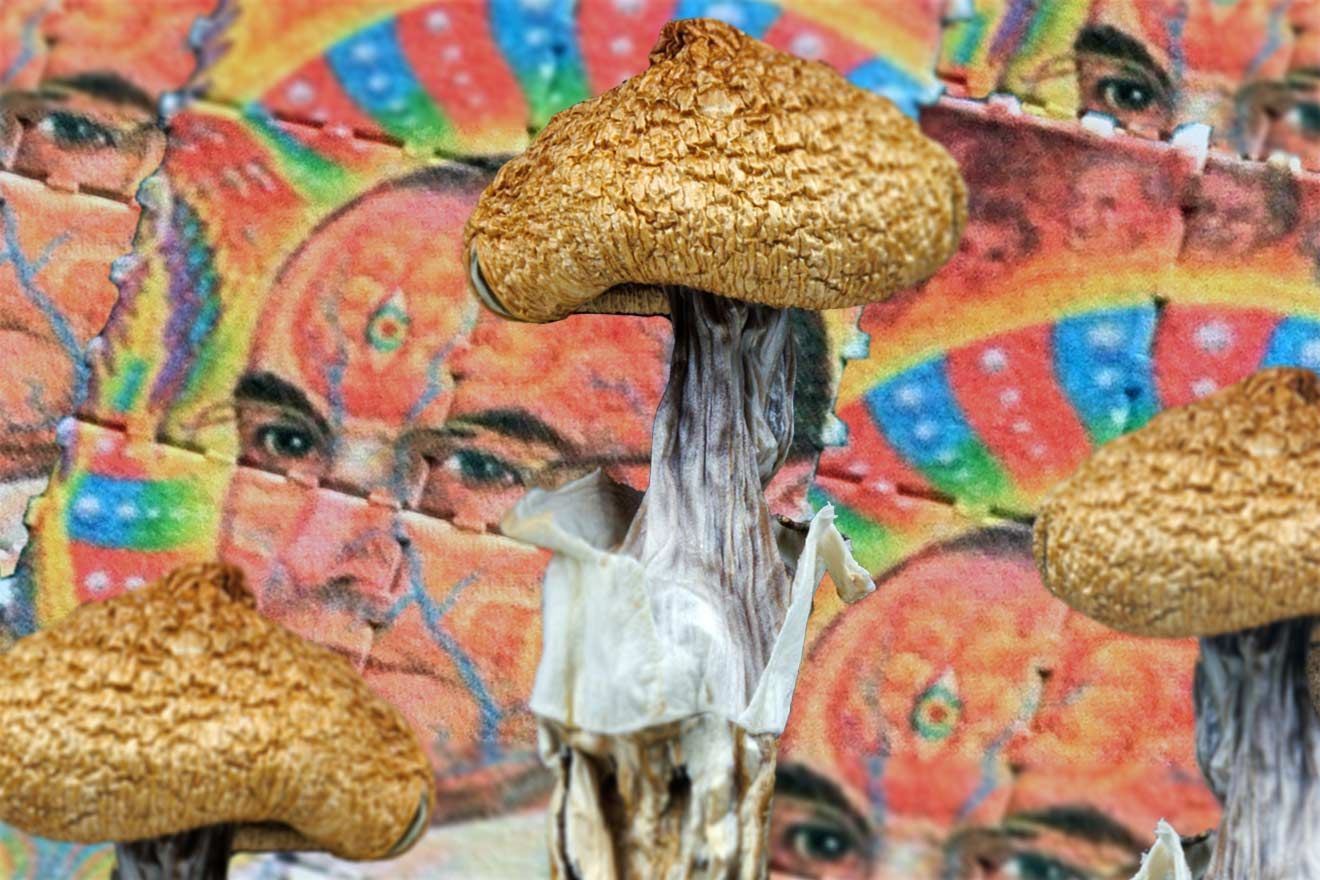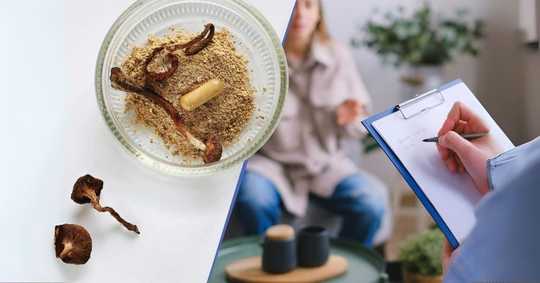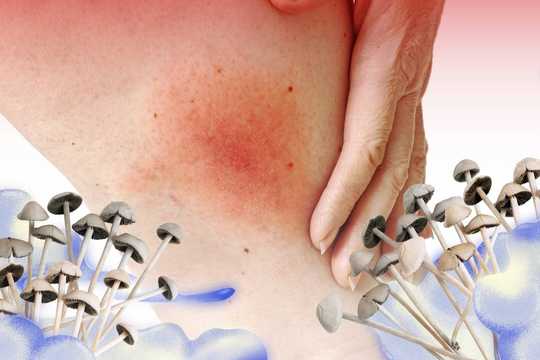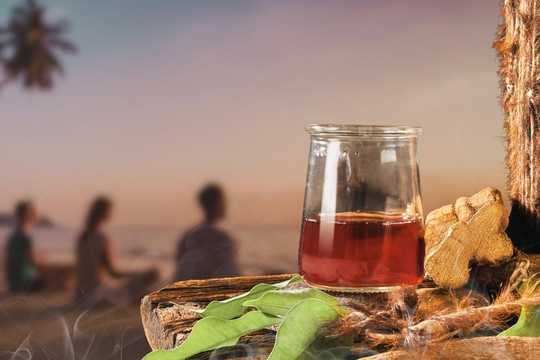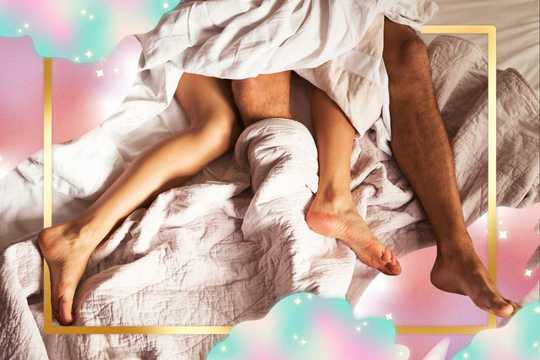LSD and psilocybin are on the list of psychedelics getting more attention in recent research. But what makes them distinct? What are their applications in therapy? Read on to learn about LSD vs. psilocybin.
Psilocybin, or psilocin, is a classic psychedelic that comes from psilocybin-carrying mushrooms. LSD (lysergic acid diethylamide) is also a classic psychedelic, but it’s completely human-engineered. Their distinct histories don’t stop there.
The origins of Psilocybin and LSD
Some scholars believe that psilocybin has been an important part of the human experience for millennia. This theory comes from our understanding of early hominin diets, as well as the biogeography of psilocybin fungi. It’s believed that humans started eating psilocybin in the Pliocene, as we began to look to the ground for nutrition [1].
Some researchers even posit that we’ve gained evolutionary advantages through our relationship with psilocybin. By stimulating serotonin receptors, psilocybin activates our coping strategies and could have allowed early humans to adapt where other species didn’t [1, 3].
Follow your Curiosity
Sign up to receive our free psychedelic courses, 45 page eBook, and special offers delivered to your inbox.Yet our western understanding of psilocybin is relatively recent. Psilocybin was forgotten by the western world until an executive from New York traveled to Huautla, Mexico in 1955. He lied to a local medicine woman to gain access to the sacred substance, and then publicized his experience upon his return home.
The village of Huautla, and psilocybin’s history, was never the same. Check out our blog for more on the complicated history of psilocybin to learn more about psilocybin’s deep cultural roots.
LSD is a very young psychedelic by comparison. Lysergic acid comes from fungus that grows on wheat or rye. It’s an ergoline compound, meaning it’s in the same family as Hawaiian baby root and morning glory, which also cause hallucinations at large doses. Yet after being combined with diethylamine, LSD is a much more potent psychedelic than other ergolines [2].
Swiss chemist Albert Hofmann synthesized LSD in 1938 in the process of creating a new clotting medication. It wasn’t until later when he accidentally came in contact with the substance that he realized it’s psychedelic effects [3]. Hofmann also synthesized psilocybin in 1958.
Psychotherapists experimented with both psilocybin and LSD in the years between their rise and criminalization in 1970. The US military was especially interested in LSD for mental health, as well as a potential psychological tool in war. Use of psychedelics was widespread among clinicians during this time. Researchers felt that they could only subject others to a substance that they had tried themselves.
By 1960, more than 40,000 patients alone had taken LSD, producing over 1,000 papers on the use of clinical psychedelics [3]. Psychotherapists were excited about the ability to reach patients more effectively through psychedelic therapy.
But DEA criminalization in 1970 halted psychedelic therapy in its tracks. Suddenly, psychedelic research was much more challenging, expensive, and often impossible to do. It wasn’t until the early 2000’s that renewed scientific interest in psychedelic medicine began carving away new pathways for research and understanding.
What are psilocybin and LSDs physical effects?
Classical psychedelics like LSD and psilocybin are partial or full agonists on serotonin receptors in the brain. Both are believed to act on 5-HT2A serotonin receptors in the frontal and visual cortex, limbic system, and basal ganglia [5]. Psilocybin and LSD’s effects on cognition, vision, and integration could be attributed to the location of these activated receptors.
This action on serotonin receptors means that both substances have cardiostimulant properties. In research, LSD elevated heart rate more while psilocybin was associated with higher blood pressures. Psilocybin increased body temperature more than LSD, and also had more effect on pupil size and reactivity [6].
These effects on serotonin have led to concern about serotonin syndrome in people who use psychedelics and are on antidepressants. Serotonin syndrome is a potentially life-threatening condition often caused by changing serotonin medications (like SSRIs), or taking more than one medication that acts on serotonin.
Yet the link between psychedelics and serotonin syndrome is unclear, and some experts believe there’s very little risk of this happening [6]. But taking MDMA and MAOIs is known to increase risks [7].
Past studies have also shown interaction risk when taking psilocyin and SSRIs. Newer research seems to debunk this information, however SSRIs do blunt the psilocybin experience [8].
More research is needed into the risks of drug interactions with psychedelicsto determine if more precautions should be taken in psychedelic therapy.
What are the mental effects of LSD vs. psilocybin?
Both substances create feelings of euphoria in users, as well as visual hallucinations that are often geometric and colorful. In research, their subjective effects tend to be very similar. Our methods of measurement may not be sensitive enough to articulate the different experiences between the two. Perhaps the greatest difference is the duration of their mental effects: psilocybin can last up to 5 hours, while LSD can last 12 hours or more [6].
In research, LSD has shown to cause more ego death than psilocybin. This could be another reason why LSD experiences can be more frightening for some people. LSD also causes more cognitive, social, and functional impairments, and it’s known to cause anxiety at higher doses [9].
LSD is an especially potent psychedelic, creating intense experiences after very little ingestion. In comparison, psilocybin has to be ingested in much larger quantities to produce hallucinations. It’s perhaps the high concentration that makes it easy to take too much LSD and have overwhelming psychedelic experiences, or “bad trips”.
Psilocybin is also known for the mystical experiences it creates in users. It’s experiences have been shown to have lasting effects, with one study showing altered brain functions and emotional processing up to a month after ingestion [10].
There’s only one current study comparing psilocybin and LSD, but another one is on the way and will finish at the end of this year. This new research will help us understand more about the psychological, physiological, and neuronal differences between psilocybin, LSD, and mescaline [11].
How common are LSD and psilocybin?
LSD and psilocybin have been pushed into the underground since being DEA scheduled. Neither are necessarily “party” drugs like MDMA, and the general population still associates them with fringe culture. Yet western perceptions are coming around to psychedelics, as evidenced by increased use in the last decade.
In 2020, Statista published that about a third of their survey participants reported using psilocybin at some point. About a quarter reported using LSD. This compares to the more than 60% of responders who reported marijuana use [12].
Because of a recent surge in research, more people are coming around to the idea that psychedelics could improve quality of life. One 2021 poll found that 65% of responders supported medical use of psychedelics, with young adults feeling much more positively than those over 30 [13].
Recent ballot measures are creating new access to psilocybin. Oregon residents will be able to request psilocybin access as early as mid-2023. A Special Access Policy in Canada aims to allow patients to access psychedelics under a doctor’s supervision. We’re excited about these recent moves, and we hope to see similar ones in other areas.
Comparing psychedelic substances in therapy
LSD and psilocybin therapy are being researched to treat distinct diagnoses.
In the 60’s researchers used LSD to treat depression, anxiety, and addiction. Yet these early studies were often poorly executed, and don’t hold up to current scientific standards. Lately, LSD has shown promise in treating alcohol use disorder, and it’s had big benefits for patients in early trials [3]. We’re hoping that further research into LSD will tell us more about its potential benefits and how to apply it to therapeutic practice.
Psilocybin has shown specific promise in treating severe depression, or Treatment-Resistant Depression (TRD). Last year, a phase IIb clinical trial showed positive outcomes for depressed patients who underwent psilocybin therapy. Results were good, but not as impressive as others. Other benefit has been shown in patients who are terminally ill with psychological distress related to cancer [1].
We’re hoping for more research comparing psilocybin therapy with other depression treatments to see how these therapies compare. Another phase III trial has already begun, moving the needle forward for psilocybin commercialization.
LSD and psilocybin therapy are both experiencing renewed interest. We’re looking forward to new research and learning opportunities in psychedelic medicine. To stay up-to-date on new research and network with other psychedelic professionals, sign up for our next speaker event.
Sources:
- Rodríguez Arce, J. M., & Winkelman, M. J. (2021). Psychedelics, sociality, and human evolution. Frontiers in Psychology, 12. https://doi.org/10.3389/fpsyg.2021.729425
- Stephen J. Traub, Chapter 45 – Hallucinogens, Editor(s): Michael W. Shannon, Stephen W. Borron, Michael J. Burns, Haddad and Winchester’s Clinical Management of Poisoning and Drug Overdose (Fourth Edition), W.B. Saunders, 2007, Pages 793-802, ISBN 9780721606934, https://doi.org/10.1016/B978-0-7216-0693-4.50050-5
- Fuentes, J. J., Fonseca, F., Elices, M., Farré, M., & Torrens, M. (2020). Therapeutic use of LSD in psychiatry: A systematic review of randomized-controlled clinical trials. Frontiers in Psychiatry, 10. https://doi.org/10.3389/fpsyt.2019.00943
- MAPS. (2007, April). The medical history of psychedelic drugs – maps. Multidisciplinary Association for Psychedelic Studies. Retrieved March 9, 2022, from https://maps.org/images/pdf/history_of_psychedelics.pdf
- De Gregorio, D., Aguilar-Valles, A., Preller, K. H., Heifets, B. D., Hibicke, M., Mitchell, J., & Gobbi, G. (2020). Hallucinogens in mental health: Preclinical and clinical studies on LSD, psilocybin, MDMA, and ketamine. The Journal of Neuroscience, 41(5), 891–900. https://doi.org/10.1523/jneurosci.1659-20.2020
- Pharmacy Times. (2021, October 20). Assessing risk for serotonin syndrome when treating patients on antidepressants with psychedelic medicine. Pharmacy Times. Retrieved March 10, 2022, from https://www.pharmacytimes.com/view/assessing-risk-for-serotonin-syndrome-when-treating-patients-on-antidepressants-with-psychedelic-medicine
- Sarparast, A., Thomas, K., Malcolm, B., & Stauffer, C. S. (2022). Drug-drug interactions between psychiatric medications and MDMA or psilocybin: A systematic review. Psychopharmacology. https://doi.org/10.1007/s00213-022-06083-y
- Becker, A. M., Holze, F., Grandinetti, T., Klaiber, A., Toedtli, V. E., Kolaczynska, K. E., Duthaler, U., Varghese, N., Eckert, A., Grünblatt, E., & Liechti, M. E. (2021). Acute effects of Psilocybin after escitalopram or placebo pretreatment in a randomized, double-blind, placebo-controlled, crossover study in healthy subjects. Clinical Pharmacology & Therapeutics. https://doi.org/10.1002/cpt.2487
- Holze, F., Ley, L., Müller, F., Becker, A. M., Straumann, I., Vizeli, P., Kuehne, S. S., Roder, M. A., Duthaler, U., Kolaczynska, K. E., Varghese, N., Eckert, A., & Liechti, M. E. (2022). Direct comparison of the acute effects of lysergic acid diethylamide and psilocybin in a double-blind placebo-controlled study in healthy subjects. Neuropsychopharmacology. https://doi.org/10.1038/s41386-022-01297-2
- Barrett, F. S., Doss, M. K., Sepeda, N. D., Pekar, J. J., & Griffiths, R. R. (2020). Emotions and brain function are altered up to one month after a single high dose of psilocybin. Scientific Reports, 10(1). https://doi.org/10.1038/s41598-020-59282-y
- University Hospital, Basel, Switzerland. (n.d.). Comparative acute effects of LSD, psilocybin and mescaline – full text view. Comparative Acute Effects of LSD, Psilocybin and Mescaline – Full Text View – ClinicalTrials.gov. Retrieved March 9, 2022, from https://clinicaltrials.gov/ct2/show/NCT04227756
- Elflein, J. (2022, January 28). Individuals who had used select drugs U.S. 2020. Statista. Retrieved March 9, 2022, from https://www.statista.com/statistics/1286621/individuals-who-had-used-select-drugs-us/
- Schulte, G. (2021, June 1). Poll: 65 percent of voters say psychedelic substances do not have medical use. TheHill. Retrieved March 9, 2022, from https://thehill.com/hilltv/what-americas-thinking/556304-poll-65-percent-of-voters-say-psychedelic-substances-do-not
- Nichols, D. E. (2016). Psychedelics. Pharmacological Reviews, 68(2), 264–355. https://doi.org/10.1124/pr.115.011478
